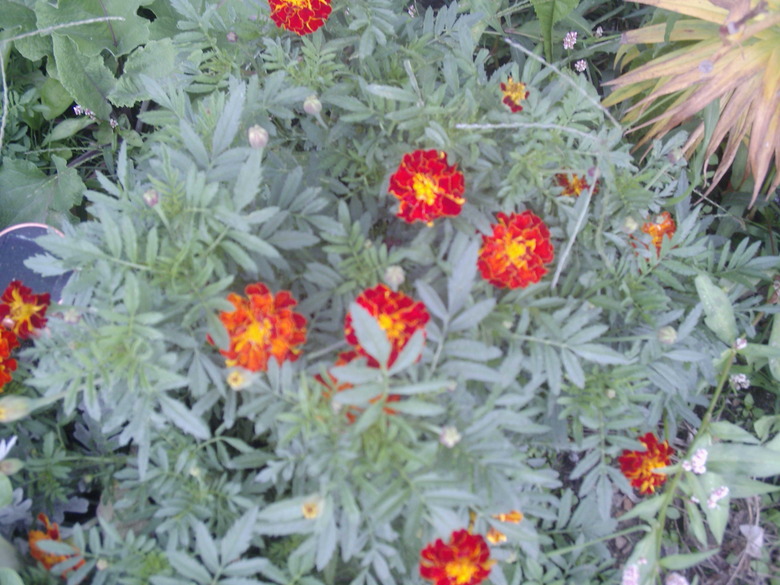How To Grow Marigolds Indoors
Things Needed
- Seed tray with planting cells (optional)
- Flower pot or planter
- Plastic film or tray cover
- Hearty seeds
- Spray bottle
- Grow light or southern exposure window
Tip
Move the flower pot closer to a more sunny location or closer to the grow light if the plants are tall and spindly. A stretching plant is trying to reach the sunlight for healthy growth.
Warning
Although marigolds tolerate dry conditions, the soil tends to dry out more quickly indoors. Maintain an even moisture level by misting between waterings if needed.
Marigolds add an assortment of orange and yellow color to the flower garden. These hardy annuals make a great indoor flower for kitchen windows or indoor gardens. Although certain varieties like the crackerjack marigold grows as tall as 4 feet, the smaller varieties, like the dwarf French marigold, produce a compact plant that averages a height of 6 to 8 inches.
Step 1
Prepare the seed tray by filling the planting cells with a sterile planting medium. Any good potting soil will work for this stage of the growing process. You can use a flower pot or planter instead of the seed tray if you prefer. Simply fill the pot three-quarters full of the potting soil.
- Marigolds add an assortment of orange and yellow color to the flower garden.
Step 2
Plant the marigold seeds about 1/8 inch deep. Cover with a light covering of soil. Planting the seeds any more shallow will not let the roots establish a deep root system. Planting too deep might keep the seeds from germinating.
Step 3
Water the seeded area thoroughly. Do not soak the soil but do make sure it is saturated so the soil feels damp.
Step 4
Cover the seed tray or pot with plastic. An easy way to cover the planter or pot is to place the entire container inside a plastic food storage bag. Secure the plastic or storage bag securely with tape or rubber bands.
- Plant the marigold seeds about 1/8 inch deep.
- An easy way to cover the planter or pot is to place the entire container inside a plastic food storage bag.
Step 5
Place the planted seeds under a grow light or in a sunny, southern window. Marigold seeds germinate in five to 14 days depending upon soil conditions and temperature. Germination occurs more quickly with warmer temperatures.
Step 6
Remove the plastic once most of the seeds have sprouted two leaves. Check the soil to ensure it is still moist. Spray with the water bottle if the soil is dry. Pouring water on new seedlings can damage new root systems.
- Place the planted seeds under a grow light or in a sunny, southern window.
- Spray with the water bottle if the soil is dry.
Step 7
Monitor the new plants throughout the growing season for watering needs and light requirements. Deadhead (remove spent blooms) the plants to allow for a continuous display of blooms.
